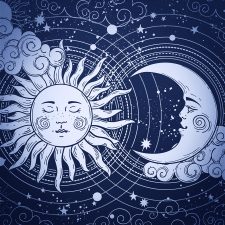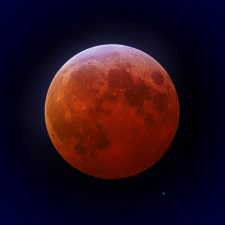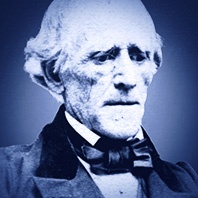The words “full moon” in many languages

It is said that there are more than 6,000 languages worldwide (this is hard to imagine) and it is a fascinating concept to think, there are probably as many words for “full moon”.
Here we begin our little journey to the full moon. A few words about the fascinating quest of the greater purpose, that includes the full moon circulating through our lives. In layman’s terms and not always scientific (astronomy experts – don’t look too closely!). We would like to wish you illuminating moments. Enjoy!


It is said that there are more than 6,000 languages worldwide (this is hard to imagine) and it is a fascinating concept to think, there are probably as many words for “full moon”.

A full moon is when the Sun and the Moon are facing opposite, being in opposite direction from an Earth perspective.
This might feel astonishing if one imagines that the Moon is on one side, the Sun on the other and the Earth in between? Shouldn’t the Earth throw a shadow onto the Moon? Bingo – this is exactly what she does! But only when the Moon is exactly on the Earth orbit, the so called “ecliptic”. When this takes place, we speak of a lunar eclipse!

The Moon needs 27.33 days to circle around the Earth. Something that is also referred to as “sidereal time”. But because the Earth orbits the Sun, just like the Moon orbits the Earth, the Moon has to travel two further days in order to resume the same position to the Earth and Sun. This is then called the “sidereal time”. In order to determine the point of time of the reoccurring full moon, the sidereal time serves as basis.

We already know now that the moon month is mostly shorter than the calendar month, being on average approximately 29.5 days. If full moon falls on the first or second of a month, it is possible that another full moon occurs in the same month, for instance in July 2004:
Friday, 2 July 2004, 01:08:54 pm
Saturday, 31 July 2004, 08:05:06 pm
This event is also known as “blue moon”.

The answer is: “everywhere at the same time”. This refers to the so called Universal Time (UT) though, which is used for general astronomical events. We have already learnt that full moon is an astronomical event, where the moon, sun and the earth play a role by being in a specific position. So, full moon takes place at a specific time in the outer space. This point of time is specified by astronomers namely by the Universal Time.

There are multiple ways of approaching this question. If we look at it from a purely theoretical standpoint, we might be tempted to say that the full moon is infinitely short, since the phases of the moon are changing continuously. The moon is not yet quite full shortly before the full moon, and is already waning shortly afterwards.
However, there is a practical aspect that lets us quantify the full moon as a finite and measurable span of time: Since the Sun is significantly bigger than the Moon, its rays are able to reach just a little over half of the Moon’s surface. This means that the timespan in which the visible side of the Moon’s surface is irradiated (as seen from Earth) is longer than infinitely short.

Whether scientists, astrologers or esoterics, they agree on one thing: the moon influences earth and life on earth. For instance, it regulates the tides through its magnetism. Also continents feel the consequence of this magnetism and either raise or lower their position sometimes up to 26 cm.

In nature it is a known fact: for some animal species, mating takes place at full moon. However, the examples that can be found on this subject are rather simple. Full moon serves in some cases indirectly as the cause (for instance through the high water levels during the tides that the horseshoe crab uses to deposit its eggs) or also as the signal for both sexes of a species to begin at the exact same time to safeguard their future existence (a particular type of fly or also corals). It is understood that also wolves are led by full moon when it is time to mate.

… that people are looking for an argument at full moon or are especially happy …
… that if full moon is surrounded by a haze, a person dies …
… that you raise your hat three times to the moon (being a man) or you make a curtsey (being a woman), in order to protect yourself from misfortune until the next full moon …
… that whoever does not chink glasses with full moon at least once, does not deserve any happiness [Greek toast] …

During a lunar eclipse, the Moon moves through the shadow of the Earth. Which means, that the Earth is positioned quite exactly between the Sun and Moon and casts its shadow onto the Moon. This is only possible at full moon and if some other requirements are met. Depending on whether the moon passes the partial or the core shadow of the Earth, we speak of a partial or total lunar eclipse.

Maybe it lies within the plan of creation that we are so susceptible to everything that is bigger than what we already know or have already experienced. However, the following merely relates to heavenly bodies …
As we recently wrote in our article »Sun and moon the same size?« here in our full moon blog, the moon changes its distance to earth due to its unusual orbit and subsequently appears to be of a different size for the observer here on earth, depending on how close it is to earth at the time. Is the moon (or another heavenly body) as close to earth as possible, one speaks of perigee, and if it is the furthest away, it is called apogee. You can confidently forget these terms again, however, you may want to memorise that the moon can appear to us in different sizes.

We have compared the amount of visitors from our full moon pages with the curve of an electrocardiogram (ECG) and came across an astonishing similarity. It almost appears as if the attention that we humans give to full moon would have its own heartbeat …
It is obvious that the interest in full moon can be linked to its rhythm. The average duration of a moon month is approx. 29.5 days, so a little bit more than four weeks and a little bit less than one calendar month. One can safely say, a lot of people are paying attention to the moon at full moon and clearly a lot less so during the other moon phases.
Who doesn’t know the bilious green, clumsy and yet endearing ogre with a heart of gold. »Shrek« is a series of computer animated motion pictures, which was the most costly computer animated production with their first part when it was released back in 2001, and awarded with an Oscar for best animation in 2002. The story is based on the children’s book »Shrek!« by the American cartoonist and children’s book author William Steig. The title derives of Yiddish and means »terror«. The movie was so successful that further sequels followed.

On Wednesday, 15th June 2011 (or Thursday 16th June for certain time zones) is full moon and a total lunar eclipse at the same time. However, it will only be completely visible in the Near and Middle East. In Asia and Australia, the moon will be already set and in Europe and Africa, the moon will be just rising by the time the lunar eclipse takes place. In America, this event won’t be visible at all.

Inspired by his trip to the coast of Maine, USA, the American artist and lithographer Fitz Hugh Lane (1804–1865) – aka Fitz Henry Lane – created the full moon painting »Fishing Party«, in 1855. He was a representative of the American luminism, a painting style characterized by a specific form of light-flooded landscapes in the 19th century (lumen = lat. light).

We are tapping again into the treasure chest of Old English stories and have come across the fairy tale »The Buried Moon« or »The Dead Moon«. This piece was published by the Australian historian Joseph Jacobs in 1894, as part of a fairy tale collection, but its origin lies much further back like so many folktales, and has been passed down by word of mouth over the centuries.

As already mentioned in our article about sleepwalking, a connection was made in the past between the moonlight and people, if their conduct was odd, crazy or threatening. One assumed that the moonlight caused this behaviour and spoke of »lunatic«, which derives from the Latin »lunatus« and means more or less »influenced by the moon«. In English, this terminology »lunatic« has been used for many forms of mental illnesses over many centuries. Because many of these disorders could not be explained for a long time (and there are still plenty of questions today), one was in need of a point of reference, a word that would accompany on the path of darkness. The Moon was very convenient.

Who doesn’t enjoy seeing a shooting star in the night sky? It is said that a wish is granted, which is believed to come true if kept secret and not shared with anyone. And who doesn’t want our wishes to become a reality?
To put it in physical terms, a shooting star is a »meteor«, a luminous effect, which develops with the occurrence of a »meteoroid« (a more or less large lump of rock from space), which burns up in the earth’s atmosphere. Not to be mistaken, however, with a »meteorite«. A meteoroid is only called like that, if it hits the earth’s surface (and could actually cause immense damage). So, no need to be concerned: shooting stars are harmless and very beautiful to watch.

The comedy horror film »The Fearless Vampire Killers«, directed by Roman Polański in 1967, is a classic of the genre. The film tells the story of the vampire scientist Professor Abronsius and his assistant Alfred (played by Roman Polański), who go on a vampire hunt in the snowy mountains of Transylvania and encounter various bizarre figures, and of course the beautiful daughter of the inn keeper Sarah (played by Sharon Tate, whom Polański married in 1968). The film entrances with its absurd and simultaneously funny atmosphere, created by the skillful interactions between light, music, scenery and actors. Thereby, satirical elements resonate as well, when the rotten aristocracy is represented in the form of the undead.

This article is for all lovers who are far apart from each other – maybe due to travelling, maybe because of personal circumstances.
Sometimes we have to learn not to experience geographical distance as inner distance. But although it is said, love surmounts time and space, one still has a longing for closeness, which is difficult to push aside, despite all sensible thoughts. A kiss over the phone is simply not the same as the moment when lips touch.